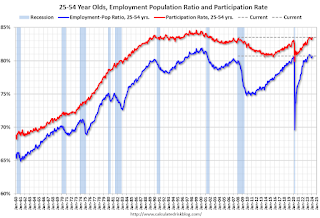Uncategorized
The secret of pitching to male VCs: Female crypto founders blast off
Female crypto founders are banding together to unlock the secrets of success in a male-dominated venture capital world.
Bridget Greenwood…

Female crypto founders are banding together to unlock the secrets of success in a male-dominated venture capital world.
Bridget Greenwood is the founder of The Bigger Pie, a U.K.-based networking organization that supports women in blockchain globally. She says that even venture capitalists with the best intentions still end up funding male founders at disproportionate rates.
I stumbled over the appalling statistic that of all VC funding [in the U.K.], only 3% goes to female founders, 8% goes to mixed teams, and the rest goes to all-male teams, she explains to Magazine.
And that initial figure has gone down to 1.5% over the pandemic.
In more difficult times, it seems that VCs are falling back on what they know which is to fund male founders. This is doubly frustrating, as research looking at the impact of COVID-19 points to the benefit of feminine leadership during challenging times.
According to data from Pitchbook, the trend is international. Last year in the United States, startups with all-women teams received just 1.9`%, or around $4.5 billion, of the $238.3 billion in allocated venture capital. The 2022 figure was down from the 2.4% achieved the year before.
Seeking to actively change this reversal, Greenwood founded The 200Bn Club with Amber Ghaddar. The initiative takes its name from a 2022 report on female entrepreneurs commissioned by the U.K. government and completed by Alison Rose, CEO of NatWest. A key finding was that investing in female entrepreneurship would add between 200 billion and 250 billion pounds to the countrys GDP.

Greenwood and Ghaddar embarked on a three-month research journey, during which they spoke with academics, investors and VCs. Ghaddar had already successfully raised money for her company, AllianceBlock, so she personally knew some of the struggles.
As Greenwood summarizes, We got two key points from our research. The first is that you need a warm introduction. A lot of the VC world is all about networking, and so we have gathered some 200 VCs to be part of our network so we can create these warm introductions.
The second point is harder to overcome and happens during the pitching process. As soon as it becomes apparent the founder is a woman, then the unconscious bias kicks in.
Pitching stage
Research published in Harvard Business Review singles out the pitching stage as a significant barrier for women. In essence, it says that men are asked promoted questions, whereas women are asked preventative questions which focus on risks and put founders in a defensive position.
Why is this important? Well, regardless of whether you are a man or a woman, if you get asked preventative questions, you are five times less likely to raise money, period,” says Greenwood.
However, the good news is that if you understand and recognize a preventative question, you can then learn to answer in a promotive way so that you give yourself a much better chance at success. But this needs to be taught.
At The 200Bn Club, female founders are coached on how to best pitch to VCs, which also includes the somewhat controversial concept of not pitching like a woman.

While earlier research suggested that investors exhibit bias against women due to their sex, more recent studies have found that the picture is more complicated than that, and that being a female entrepreneur does not diminish interest by investors in and of itself.
A team of Canadian and American researchers conducted an experiment that found investors are actually biased against displays of feminine-stereotyped behaviors by entrepreneurs, whether from men or women. The research, titled Dont Pitch Like a Girl, found that behaviors coded as feminine were associated with negative perceptions about the entrepreneurs business competency.
Now, that doesnt sound any better from a gender studies perspective, but from a practical standpoint, it means female founders can work around the issue by using more masculine-stereotyped behaviors while pitching.
It turns out that while female founders are happy to talk about their team, they are much more self-effacing when it comes to speaking about themselves. And since the VC wants to invest in the leader, this is a damning habit for female founders, Greenwood says.
We work with our female founders to deliver the pitch with confidence, assurance and faith in themselves. And we help them answer the preventative questions in a promotive fashion.
ConsenSys on equality
Thessy Mehrain, co-founder and CEO of Liquality, has a background that makes her uniquely positioned to understand the system and how to disrupt it. She spent six years creating products at JPMorgan in the U.S. and joined the Occupy movement after the financial crisis, and it was from there that she discovered Ethereum.
So, I totally fell in love with Web3, but I also didnt want to be part of something that creates technology that repeats what we have in the legacy world, she tells Magazine.
While still working at JPMorgan in 2015, she heard Joseph Lubin, the founder of ConsenSys, speak at a fintech conference and was blown away by his vision. Shortly after, she jumped ship to ConsenSys and began working on a project to explore swapping between Bitcoin and Ethereum in a decentralized manner without a middleman. That project evolved in time into her startup, Liquality.
In 2016, Mehrain also created the New York-based Women in Blockchain group to help address gender inequality in the sector. The group now boasts 3,000 members.
Working at ConsenSys provided her with great support, access to technology and a co-founder Harsh Vakharia, who also previously founded the startup Etherbit. Coming out of ConsenSys, Mehrain recognizes she had many advantages over other unaffiliated projects.

The pair successfully raised $7 million in 2021. When asked if she experienced different treatment as a female founder, Mehrain replies:
How would I know? I was never raised as a man. However, coming out of ConsenSys definitely gave us an edge and warm introductions. It was at that point, during our raise, that I became aware of the dominance of men in this space. At Liquality, we are focusing on the Global South, so we knew from the get-go that we needed to have diverse representation in our funders. That changed our thinking and our outreach.
We knew that diversity makes products more sustainable its not just the right thing to do, its the right thing to do in business terms. We needed to explain that to our investors. But its more than having diversity at the cap table, its what you build afterwards.
Mehrain and her co-founder have assembled a team that reflects the culture in which they want to grow. We work hard at this. Its not an afterthought. For example, we have a female engineering lead and a lot of strong female engineers but that took work.
We are creating a legacy as we go. Its very important so the next generation of women founders and leaders have role models and supports to help them.
Corporate backgrounds help
A strong corporate background can also help female founders navigate the stormy VC waters. Ayelen Denovitzer was previously with Bain and Revolut, and co-founding Solvo has been her first startup role. She raised $3.5 million led by Index Ventures over just three weeks last year.
Denovitzer did not notice any limitations due to being a woman, but she is also happy to debunk some common urban myths.

There is this notion that female leaders are more risk-averse and are more emotional when it comes to decision-making, but I think that is largely debunked. Of course, there is unconscious bias, but we are making inroads on those notions too, she tells Magazine, noting that individual differences are much more salient.
I believe it is more down to individuals how we mix. I am much more methodical than my co-founder, which is a me thing rather than necessarily a female thing.
Like Mehrain with Liquality, it was important to her that the VCs at the cap table reflected the projects ambitions. Solvo is a retail-facing financial app that aims to bring the best features of crypto without the complexities and jargon.
So, we needed retail-facing VCs to come onboard, says Denovitzer.
Finding the right fellow co-founders is another element more important than gender. Helena Gagern and Grace Wang, co-founders of Web3 messaging app Salsa, both agree.
We had shared values which was of top importance to us both and similar energy levels, Gagern tells Magazine.
They bonded over a pilot project during two weeks in Austria, where they learned about passion, energy and pragmatism. They knew they would work together on a bigger project, which turned out to be Salsa, for which they raised $2 million.
We were fundraising in a bear market and initially were looking for $500,000.
However, the co-founders quickly realized that this amount was too little and jumped it up to $2 million which quite possibly ensured their success.
Another element of their success was that they had met their investors in real life at conferences over the past two years. Those warm introductions went a long way to smooth the path to success.
I didnt feel being female was a disadvantage, but I did strongly feel the underrepresentation. This pushed us to approach female VCs as a priority, says Gagern.
Benefits of being a female founder
Wang tells Magazine that there are a host of benefits to being a female founder. Once you get over the imposter syndrome issue, being a woman can make you stand out in a male-dominated space. All-female teams are rare, and so we pushed this to our advantage. And we also reach out to other female founders helping each other.

But why the focus on female entrepreneurship? Aside from offering gender equality, there is data that points to female founders achieving better results. According to a study from the Boston Consulting Group, businesses founded by women produce twice the revenue from every dollar in funding than men. Given that they also receive less than half the funding, thats a better bang for your VC buck.
Statistics compiled by Springboard, which helps accelerate the growth of women-led companies, suggest that even a little bit of gender diversity helps and that startups with at least one female founder outperformed all-male founding teams by 63%.
Finally, Mehrain is pragmatic in this gender-balancing game and says men often want to help but just dont know how.
You know, white males are the best allies. Right? Tell them what to do, tell them what is needed. Make them allies and really have them understand how important this is. Then its a win-win for all.

Uncategorized
Shipping company files surprise Chapter 7 bankruptcy, liquidation
While demand for trucking has increased, so have costs and competition, which have forced a number of players to close.

The U.S. economy is built on trucks.
As a nation we have relatively limited train assets, and while in recent years planes have played an expanded role in moving goods, trucks still represent the backbone of how everything — food, gasoline, commodities, and pretty much anything else — moves around the country.
Related: Fast-food chain closes more stores after Chapter 11 bankruptcy
"Trucks moved 61.1% of the tonnage and 64.9% of the value of these shipments. The average shipment by truck was 63 miles compared to an average of 640 miles by rail," according to the U.S. Bureau of Transportation Statistics 2023 numbers.
But running a trucking company has been tricky because the largest players have economies of scale that smaller operators don't. That puts any trucking company that's not a massive player very sensitive to increases in gas prices or drops in freight rates.
And that in turn has led a number of trucking companies, including Yellow Freight, the third-largest less-than-truckload operator; J.J. & Sons Logistics, Meadow Lark, and Boateng Logistics, to close while freight brokerage Convoy shut down in October.
Aside from Convoy, none of these brands are household names. but with the demand for trucking increasing, every company that goes out of business puts more pressure on those that remain, which contributes to increased prices.
Image source: Shutterstock
Another freight company closes and plans to liquidate
Not every bankruptcy filing explains why a company has gone out of business. In the trucking industry, multiple recent Chapter 7 bankruptcies have been tied to lawsuits that pushed otherwise successful companies into insolvency.
In the case of TBL Logistics, a Virginia-based national freight company, its Feb. 29 bankruptcy filing in U.S. Bankruptcy Court for the Western District of Virginia appears to be death by too much debt.
"In its filing, TBL Logistics listed its assets and liabilities as between $1 million and $10 million. The company stated that it has up to 49 creditors and maintains that no funds will be available for unsecured creditors once it pays administrative fees," Freightwaves reported.
The company's owners, Christopher and Melinda Bradner, did not respond to the website's request for comment.
Before it closed, TBL Logistics specialized in refrigerated and oversized loads. The company described its business on its website.
"TBL Logistics is a non-asset-based third-party logistics freight broker company providing reliable and efficient transportation solutions, management, and storage for businesses of all sizes. With our extensive network of carriers and industry expertise, we streamline the shipping process, ensuring your goods reach their destination safely and on time."
The world has a truck-driver shortage
The covid pandemic forced companies to consider their supply chain in ways they never had to before. Increased demand showed the weakness in the trucking industry and drew attention to how difficult life for truck drivers can be.
That was an issue HBO's John Oliver highlighted on his "Last Week Tonight" show in October 2022. In the episode, the host suggested that the U.S. would basically start to starve if the trucking industry shut down for three days.
"Sorry, three days, every produce department in America would go from a fully stocked market to an all-you-can-eat raccoon buffet," he said. "So it’s no wonder trucking’s a huge industry, with more than 3.5 million people in America working as drivers, from port truckers who bring goods off ships to railyards and warehouses, to long-haul truckers who move them across the country, to 'last-mile' drivers, who take care of local delivery."
The show highlighted how many truck drivers face low pay, difficult working conditions and, in many cases, crushing debt.
"Hundreds of thousands of people become truck drivers every year. But hundreds of thousands also quit. Job turnover for truckers averages over 100%, and at some companies it’s as high as 300%, meaning they’re hiring three people for a single job over the course of a year. And when a field this important has a level of job satisfaction that low, it sure seems like there’s a huge problem," Oliver shared.
The truck-driver shortage is not just a U.S. problem; it's a global issue, according to IRU.org.
"IRU’s 2023 driver shortage report has found that over three million truck driver jobs are unfilled, or 7% of total positions, in 36 countries studied," the global transportation trade association reported.
"With the huge gap between young and old drivers growing, it will get much worse over the next five years without significant action."
Related: Veteran fund manager picks favorite stocks for 2024
bankruptcy bankruptcies pandemic stocks commoditiesUncategorized
Wendy’s has a new deal for daylight savings time haters
The Daylight Savings Time promotion slashes prices on breakfast.

Daylight Savings Time, or the practice of advancing clocks an hour in the spring to maximize natural daylight, is a controversial practice because of the way it leaves many feeling off-sync and tired on the second Sunday in March when the change is made and one has one less hour to sleep in.
Despite annual "Abolish Daylight Savings Time" think pieces and online arguments that crop up with unwavering regularity, Daylight Savings in North America begins on March 10 this year.
Related: Coca-Cola has a new soda for Diet Coke fans
Tapping into some people's very vocal dislike of Daylight Savings Time, fast-food chain Wendy's (WEN) is launching a daylight savings promotion that is jokingly designed to make losing an hour of sleep less painful and encourage fans to order breakfast anyway.
Image source: Wendy's.
Promotion wants you to compensate for lost sleep with cheaper breakfast
As it is also meant to drive traffic to the Wendy's app, the promotion allows anyone who makes a purchase of $3 or more through the platform to get a free hot coffee, cold coffee or Frosty Cream Cold Brew.
More Food + Dining:
- Taco Bell menu tries new take on an American classic
- McDonald's menu goes big, brings back fan favorites (with a catch)
- The 10 best food stocks to buy now
Available during the Wendy's breakfast hours of 6 a.m. and 10:30 a.m. (which, naturally, will feel even earlier due to Daylight Savings), the deal also allows customers to buy any of its breakfast sandwiches for $3. Items like the Sausage, Egg and Cheese Biscuit, Breakfast Baconator and Maple Bacon Chicken Croissant normally range in price between $4.50 and $7.
The choice of the latter is quite wide since, in the years following the pandemic, Wendy's has made a concerted effort to expand its breakfast menu with a range of new sandwiches with egg in them and sweet items such as the French Toast Sticks. The goal was both to stand out from competitors with a wider breakfast menu and increase traffic to its stores during early-morning hours.
Wendy's deal comes after controversy over 'dynamic pricing'
But last month, the chain known for the square shape of its burger patties ignited controversy after saying that it wanted to introduce "dynamic pricing" in which the cost of many of the items on its menu will vary depending on the time of day. In an earnings call, chief executive Kirk Tanner said that electronic billboards would allow restaurants to display various deals and promotions during slower times in the early morning and late at night.
Outcry was swift and Wendy's ended up walking back its plans with words that they were "misconstrued" as an intent to surge prices during its most popular periods.
While the company issued a statement saying that any changes were meant as "discounts and value offers" during quiet periods rather than raised prices during busy ones, the reputational damage was already done since many saw the clarification as another way to obfuscate its pricing model.
"We said these menuboards would give us more flexibility to change the display of featured items," Wendy's said in its statement. "This was misconstrued in some media reports as an intent to raise prices when demand is highest at our restaurants."
The Daylight Savings Time promotion, in turn, is also a way to demonstrate the kinds of deals Wendy's wants to promote in its stores without putting up full-sized advertising or posters for what is only relevant for a few days.
Related: Veteran fund manager picks favorite stocks for 2024
stocks pandemicUncategorized
Comments on February Employment Report
The headline jobs number in the February employment report was above expectations; however, December and January payrolls were revised down by 167,000 combined. The participation rate was unchanged, the employment population ratio decreased, and the …

Prime (25 to 54 Years Old) Participation
Since the overall participation rate is impacted by both cyclical (recession) and demographic (aging population, younger people staying in school) reasons, here is the employment-population ratio for the key working age group: 25 to 54 years old.
The 25 to 54 years old participation rate increased in February to 83.5% from 83.3% in January, and the 25 to 54 employment population ratio increased to 80.7% from 80.6% the previous month.
Average Hourly Wages
 The graph shows the nominal year-over-year change in "Average Hourly Earnings" for all private employees from the Current Employment Statistics (CES).
The graph shows the nominal year-over-year change in "Average Hourly Earnings" for all private employees from the Current Employment Statistics (CES). Wage growth has trended down after peaking at 5.9% YoY in March 2022 and was at 4.3% YoY in February.
Part Time for Economic Reasons
 From the BLS report:
From the BLS report:"The number of people employed part time for economic reasons, at 4.4 million, changed little in February. These individuals, who would have preferred full-time employment, were working part time because their hours had been reduced or they were unable to find full-time jobs."The number of persons working part time for economic reasons decreased in February to 4.36 million from 4.42 million in February. This is slightly above pre-pandemic levels.
These workers are included in the alternate measure of labor underutilization (U-6) that increased to 7.3% from 7.2% in the previous month. This is down from the record high in April 2020 of 23.0% and up from the lowest level on record (seasonally adjusted) in December 2022 (6.5%). (This series started in 1994). This measure is above the 7.0% level in February 2020 (pre-pandemic).
Unemployed over 26 Weeks
 This graph shows the number of workers unemployed for 27 weeks or more.
This graph shows the number of workers unemployed for 27 weeks or more. According to the BLS, there are 1.203 million workers who have been unemployed for more than 26 weeks and still want a job, down from 1.277 million the previous month.
This is close to pre-pandemic levels.
Job Streak
| Headline Jobs, Top 10 Streaks | ||
|---|---|---|
| Year Ended | Streak, Months | |
| 1 | 2019 | 100 |
| 2 | 1990 | 48 |
| 3 | 2007 | 46 |
| 4 | 1979 | 45 |
| 5 | 20241 | 38 |
| 6 tie | 1943 | 33 |
| 6 tie | 1986 | 33 |
| 6 tie | 2000 | 33 |
| 9 | 1967 | 29 |
| 10 | 1995 | 25 |
| 1Currrent Streak | ||
Summary:
The headline monthly jobs number was above consensus expectations; however, December and January payrolls were revised down by 167,000 combined. The participation rate was unchanged, the employment population ratio decreased, and the unemployment rate was increased to 3.9%. Another solid report.
-

 Uncategorized2 weeks ago
Uncategorized2 weeks agoAll Of The Elements Are In Place For An Economic Crisis Of Staggering Proportions
-

 Uncategorized1 month ago
Uncategorized1 month agoCathie Wood sells a major tech stock (again)
-

 Uncategorized3 weeks ago
Uncategorized3 weeks agoCalifornia Counties Could Be Forced To Pay $300 Million To Cover COVID-Era Program
-

 Uncategorized2 weeks ago
Uncategorized2 weeks agoApparel Retailer Express Moving Toward Bankruptcy
-

 Uncategorized3 weeks ago
Uncategorized3 weeks agoIndustrial Production Decreased 0.1% in January
-

 International3 hours ago
International3 hours agoWalmart launches clever answer to Target’s new membership program
-

 Government1 month ago
Government1 month agoWar Delirium
-

 Uncategorized3 weeks ago
Uncategorized3 weeks agoRFK Jr: The Wuhan Cover-Up & The Rise Of The Biowarfare-Industrial Complex





















